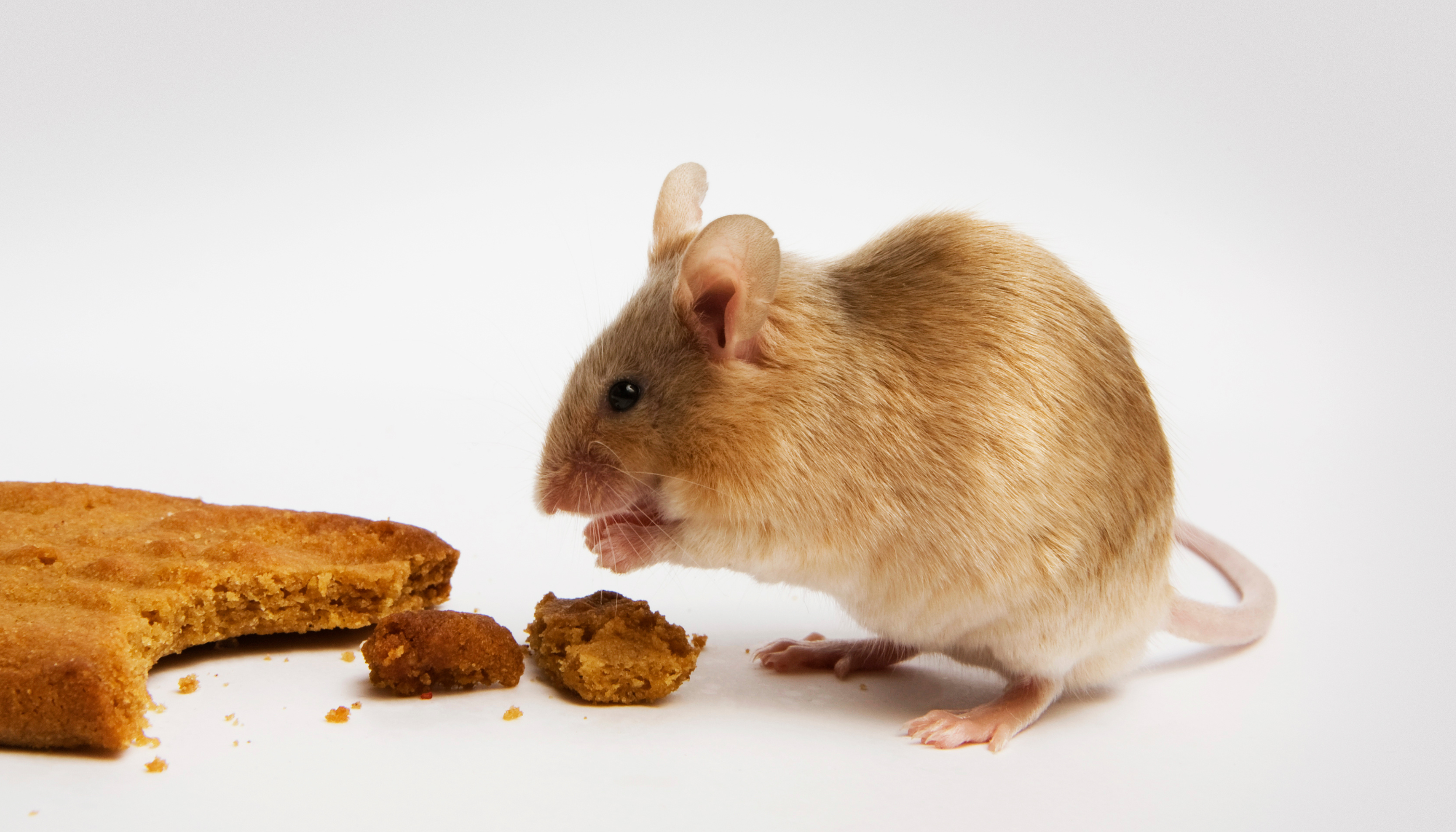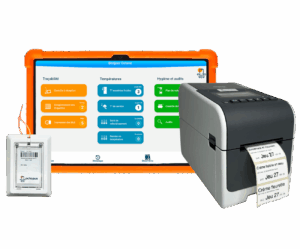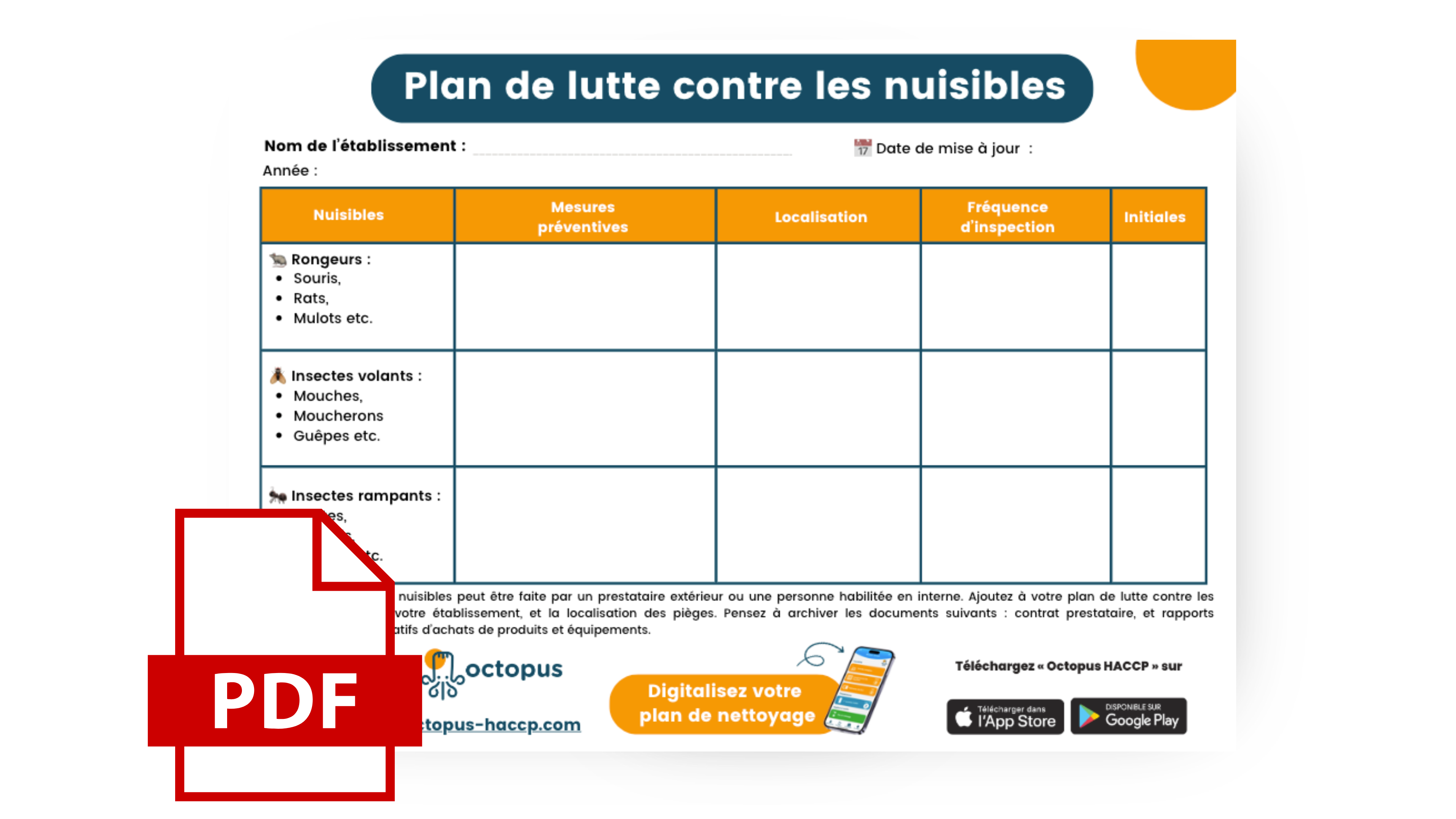Pest control plan: PDF download
Nettoyer et désinfecter
⏳ Temps de lecture : 5 min
? Mis à jour le : 18/09/2024
What is the purpose of a pest control plan? ?
However, as with all documents required by HACCP methodology, simply having it in a binder isn’t enough: it must be rigorously implemented and monitored. Like the cleaning schedule, the pest control plan requires regular follow-up ?. In fact, it’s wise to integrate actions related to this plan into your daily cleaning routine.
By adopting a proactive approach with a pest control plan, you not only ensure the sanitary safety of your establishment, but also guarantee peace of mind for your team during hygiene inspections. ?️
Which types of pests are covered by this control plan? ?
You must identify all potential pest types that could pose risks to your establishment, such as:
- Rodents ?: mice, rats, field mice, brown rats, etc.
- Crawling insects ?: ants, termites, moths, fleas, cockroaches, ticks, bed bugs, worms, spiders etc.
- Flying insects ?: flies, gnats, wasps, mosquitoes, hornets etc.
- Birds ?⬛: pigeons, starlings etc.
For each pest type, the plan should detail prevention, monitoring and elimination methods.
Pest control plan and HACCP: How to integrate it into my FSMS? ✅
The pest control plan must be incorporated into your Food Safety Management System (FSMS). At the end of this article, we provide a blank pest control plan template available as a downloadable PDF. This PDF document should be customized for your establishment. If you have multiple locations, you must adapt each pest control plan according to each site’s specific requirements.

- Preventive measures to avoid pest introduction ?, then their establishment and proliferation in premises (basements, storage areas, waste rooms, kitchens etc.)
- Active control measures when pests are present ?: chemical treatments and/or traps.
- Regular monitoring plan ? of measure effectiveness and enhanced actions in case of infestation.
Preventive Measures Plan:
Structural preventive measures against pests:
To prevent pest entry and proliferation in a kitchen, the first step is to limit pest access to storage and production areas. For example:
- Exterior doors with floor-level seals
- Air vents and ventilation openings protected by grilles
- Sealed windows with intact weather stripping
- Open windows protected by screens
- No holes or cracks in walls/floors that could allow entry or become pest breeding sites
Operational rules limiting pest access:
- Doors and windows ?: systematic closure of unprotected openings
- Waste management ?: bins emptied after each service, sealed containers, clean/closed waste room regularly cleaned and disinfected
- Stock intake ?: removal of pallets and cardboard
- Food storage?: sealed packaging, no floor storage, closed storage room regularly cleaned/disinfected to prevent food debris accumulation
- Exterior areas ?: Maintenance and control to prevent rodent harborage and pest nesting
Active Control Measures
When rodents or insects have entered your establishment, implement baits or traps with these solutions:
- Chemical treatments ?️ applied to surfaces in areas where rodents or crawling insects (cockroaches) may travel
- Non-dispersible toxic baits ?️ placed at potential pest pathways but away from production areas to limit contamination risk
- Traps ?, such as catch traps (for rodents/crawlers)
- Electric insect killers ? with UV lamps. Position near production area access points (e.g., delivery docks, kitchen entry) but set back to avoid attracting outdoor insects
Monitoring Plan:
Like a cleaning schedule, the monitoring plan should contain:
- Responsible parties ? (external contractor or in-house staff)
- Control methods used: chemicals, baits, traps, insect killers, detectors etc.
- Device locations: include a facility map marking control device placements
- Inspection/intervention frequency: some actions (like routine checks) may be weekly as part of cleaning schedules, while others (like trap replacement) are less frequent but must be scheduled (e.g., monthly cockroach trap renewal)
- Chemical product list: as with cleaning products, maintain technical and safety data sheets for all pest control chemicals
- Response protocol when pests or signs are found (droppings, gnawed materials, nests etc.), including prevention reassessment and pest control company contact
Monitoring Plan Tracking
Your pest control tracking sheet must include these elements. To simplify your work, we offer a free downloadable template when you complete the form below. It will be emailed as a PDF.
- Establishment name ?. Note: multi-site operations require separate sheets
- Update date ?. Plans must be revised regularly to reflect changing conditions
- Target pests ?: specific plans for rodents, flying insects, crawling insects, and birds if applicable
- Preventive measures by pest type: structural or behavioral controls
- Locations ?: For each pest, identify where traps/baits/biocides are placed, following French biocides regulation (October 9, 2013 decree)
- Inspection frequency ?: daily, weekly, monthly etc.
- Initials/signature of responsible staff
- Corrective actions ✅: responses to infestations (trap replacement, professional intervention etc.)
When using external contractors, request their monitoring reports and service records.
Download my HACCP pest control plan PDF
The PDF document you’ll receive by email should be completed and customized for your establishment. We recommend integrating pest control checks into your cleaning/disinfection routines.
Want to digitize and simplify operations? Discover how to digitalize your cleaning/disinfection plan. Create tailored cleaning plans, customize checklists, and track progress directly in our HACCP application.
Finally, maintain these records for 3 years:
- Written monitoring and intervention records for in-house operations
- Service reports and sanitation files for contractor-performed services





